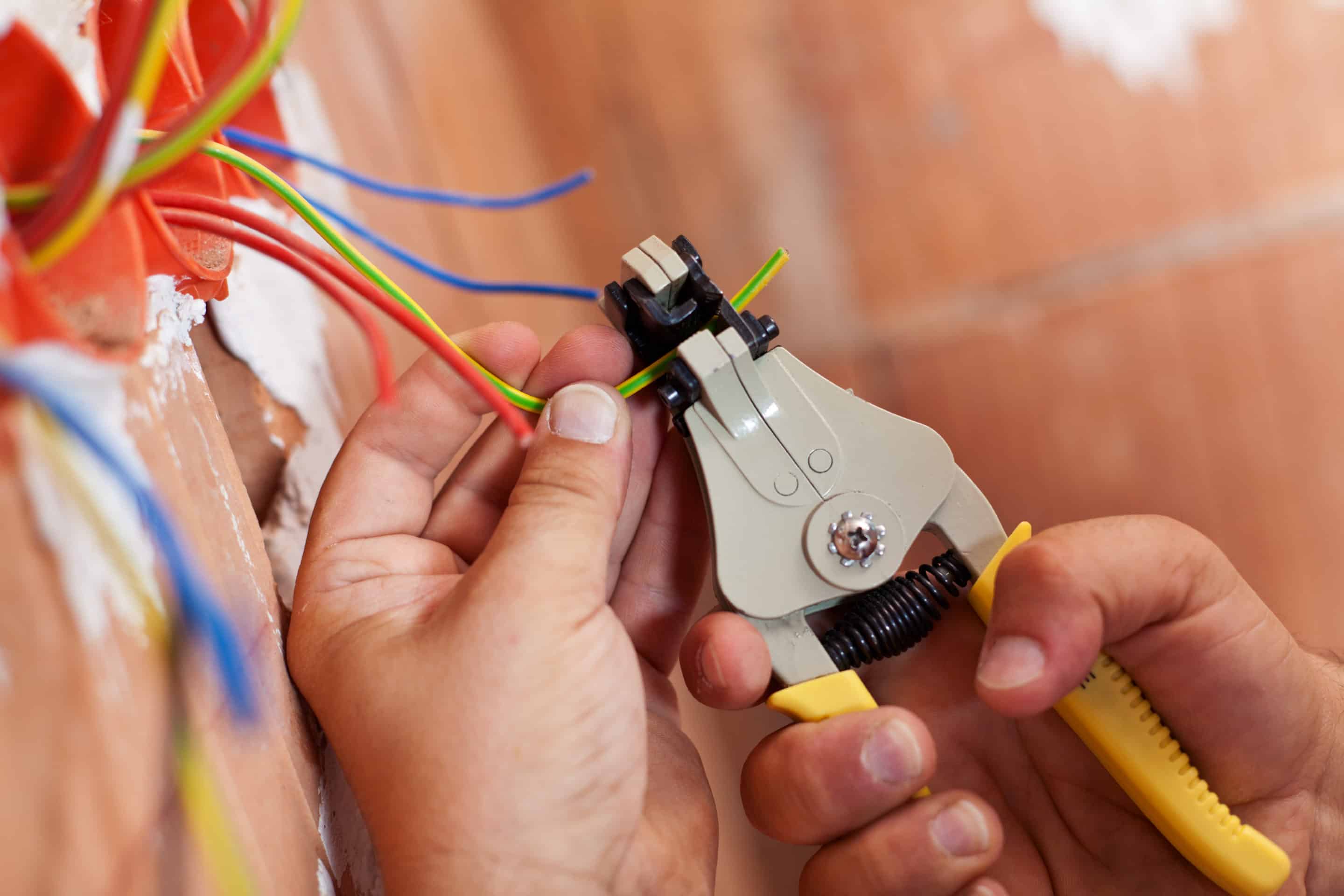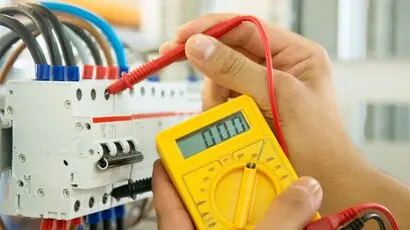Usual Electrical Problems Every House Owner Need To Know Concerning
Homeowners usually encounter numerous electric issues that can influence security and functionality. Concerns like flickering lights and stumbled circuit breakers are a lot more common than lots of understand. These scenarios can indicate deeper electric issues that warrant interest. Recognizing the indicators and dangers related to obsolete electrical wiring and dead electrical outlets is important. What procedures can be required to protect against these troubles? Discovering these usual electrical problems could expose essential understandings for maintaining a secure home atmosphere.

Flickering Lights: Reasons and Solutions
Why do some home owners experience flickering lights? Flickering lights can be an usual inconvenience, often indicating underlying electrical problems. One key reason is loose or defective links within lights or wiring, which can bring about periodic power supply. Additionally, making use of high-wattage home appliances on the exact same circuit may cause voltage variations, leading to dimming or flickering. Another prospective issue is an overloaded circuit, where a lot of tools draw power all at once, stressing the electrical system. In addition, degraded or outdated electrical wiring can add to irregular electric circulation. Sometimes, flickering lights might signify an issue with the home's electrical panel or solution line. House owners ought to deal with flickering lights without delay to stay clear of potential risks. Solutions may consist of tightening up connections, rearranging device lots, or getting in touch with a licensed electrical contractor for a comprehensive assessment. Determining the origin can help assure a safe and steady electric system in the home.
Tripped Circuit Breakers: What You Need to Know
Have home owners ever before wondered what causes their circuit breakers to trip suddenly? This common issue frequently develops from an overload of electrical circuits, where a lot of tools attract power simultaneously. In such instances, the breaker serves as a security system, disrupting the circulation of electrical energy to stop getting too hot and potential dangers. Another constant cause is a short circuit, which takes place when a live cable get in touches with a neutral cable, creating a surge of electrical energy that trips the breaker. Ground faults can additionally cause tripped breakers; these happen when an online cord touches the ground or a based surface area, posing significant security risks. Homeowners must regularly evaluate their use of high-wattage home appliances to prevent overwhelming circuits. In addition, understanding the feature of circuit breakers can assist them respond suitably during a trip, guaranteeing their home stays secure and well-maintained.
Out-of-date Electrical Wiring: Threats and indicators
Outdated electrical wiring can present considerable threats to homeowners, typically going undetected up until issues develop. Houses developed before the 1980s might still have aluminum circuitry or knob-and-tube systems, which are no more considered secure. Indicators of outdated circuitry include flickering lights, regularly tripped breaker, or melting scents near outlets. These indicators may suggest that the electric system is overloaded or deteriorating.Additionally, house owners could see swelter marks around electrical outlets or switches, which can suggest overheating. The danger of electrical fires significantly enhances with outdated circuitry, as these systems were not made to deal with modern-day electrical tons. Home owners are encouraged to have their wiring evaluated consistently, specifically when renovating or adding new devices. By recognizing these indicators early, they can prevent harmful scenarios and keep a safer living atmosphere. Upgrading to current electrical criteria is a positive action in keeping home safety and performance.
Frequently Blown Fuses: Repairing Tips
Frequent blown merges can show underlying electric concerns that might originate from outdated electrical wiring or overloaded circuits. Home owners experiencing this issue should first recognize the appliances attached to the impacted circuit. It is a good idea to avoid making use of numerous high-wattage devices all at once, as this can lead to circuit overload. If the issue continues, checking the fuse box for indicators of wear or damages is crucial; a faulty fuse box might require replacement.Additionally, examining for loosened connections within the circuit can help protect against future occurrences. Property owners ought to additionally validate that the integrates being used are of the appropriate amperage, as making use of an incorrect fuse can exacerbate the trouble. If these repairing suggestions do not fix the issue, seeking advice from an accredited electrical expert is recommended to review the electric system additionally. Addressing these concerns promptly can aid mitigate risks and assure the security of the home's electric infrastructure.
Dead Electrical Outlets: Common Reasons and Repairs
When a home owner encounters a dead outlet, it can often be a source of irritation and confusion. Several common reasons may bring about this issue. One frequent perpetrator is a tripped circuit breaker, which can be easily reset. House owners ought to inspect their electric panel to examine if any kind of breakers are in the off position. An additional possibility is a malfunctioning outlet itself, which might require replacement. In addition, loose electrical wiring links within discover this info here the electrical outlet can interrupt power flow, making assessment essential.Sometimes, the problem might come from an overloaded circuit, particularly when numerous devices are connected. In such instances, redistributing the electric tons can settle the concern. Home owners should likewise consider the age of their electrical wiring; older systems may need updates to satisfy modern electrical needs. If these steps do not remedy the situation, speaking with a qualified electrician is a good idea to ensure safety and security and appropriate diagnosis.
Electrical Shocks: When to Be Concerned
How can home owners identify whether an electrical shock warrants issue? Home owners should first examine the seriousness and context of the shock. A light fixed shock, commonly really felt when touching steel things, is common and commonly safe. If the shock takes place while communicating with a plugged-in home appliance or outlet, it may show a more major issue.The area and frequency of the shocks are essential. Repetitive shocks from the same resource, particularly in wet locations like kitchens or washrooms, can signal malfunctioning circuitry or inadequate grounding. House owners must also take into consideration the experience of the shock; a shock that creates pain or muscle mass tightenings is a lot more worrying than a mere tingle.If there's any kind of unpredictability, it is a good idea to speak with a qualified electrical expert. Overlooking potential electrical risks can result in serious security dangers, including fire or severe injury.
Overloaded Circuits: Avoidance and Safety Actions
Overloaded circuits present significant risks in domestic settings, commonly resulting in electric fires or devices damage (Level 2 Electrician Sydney). Homeowners have to acknowledge the indications of an overloaded circuit, such as often tripped breakers or dimming lights. Applying preventive safety methods can help reduce these risks and assure a much safer living atmosphere
Identifying Overloaded Circuits
What indications indicate that a circuit may be strained? Property owners need to be cautious for several crucial signs. Frequently tripped circuit breakers or blown fuses suggest excessive load on the circuit. Lowering or flickering lights, specifically when other home resource appliances are in usage, can symbolize an insufficient power supply. In addition, outlets or switches that really feel warm to the touch might show getting too hot, a prospective fire danger. Uncommon humming audios from outlets also require focus, as they can represent electrical concerns. Ultimately, if home appliances operate inefficiently or stop working to start, it may suggest an overloaded circuit. Identifying these signs early can assist stop major electrical problems and promote a much safer home setting.
Preventive Safety Practices
To maintain a safe and efficient electric system, property owners should carry out preventive safety methods that address potential circuit overloads. One efficient procedure is to prevent connecting way too many gadgets to a solitary electrical outlet, as this can surpass the circuit's capability. Utilizing power strips with built-in circuit breakers can help distribute power safely. Homeowners need to likewise frequently evaluate cords and home appliances for damage and replace any malfunctioning tools promptly. It is essential to assure that breaker are working properly and to be mindful of the complete power level being made use of in each circuit. Additionally, getting in touch with a qualified electrician for regular assessments can identify possible problems before they intensify, assuring a much safer living environment and lengthening the lifespan of electric systems.
Regularly Asked Concerns
How Frequently Should I Have My Electric System Inspected?
Regular inspections of electric systems are recommended every three to 5 years. House owners ought to take into consideration a lot more frequent checks if they experience issues, embark on improvements, or live in older residential or you can try these out commercial properties to ensure safety and conformity.
Can I Take Care Of Electric Issues Myself or Work With an Expert?

What Are the Signs of an Electric Fire Risk?
Signs of an electric fire risk consist of frequently stumbled circuit breakers, flickering lights, burning smells, discolored electrical outlets, or cozy, humming cables. Homeowners must remain attentive and seek expert aid if any of these signs are present.
How Do I Know if My Home Needs an Electrical Upgrade?
To establish if a home requires an electric upgrade, indicators consist of constant breaker journeys, outdated wiring, insufficient outlets, flickering lights, and the existence of older electrical panels, suggesting prospective safety hazards and inefficiency.
Are There Details Safety Tips for DIY Electric Work?
When considering DIY electric job, one should constantly switch off power, utilize protected tools, confirm circuit capability, follow local codes, and get in touch with experts for complex tasks to ensure safety and protect against mishaps. An additional prospective problem is an overloaded circuit, where as well several gadgets attract power concurrently, stressing the electric system. The danger of electrical fires noticeably raises with out-of-date wiring, as these systems were not created to take care of modern electric lots. Regular blown fuses can suggest underlying electrical concerns that may stem from obsolete electrical wiring or overloaded circuits. To keep a reliable and secure electric system, house owners should implement preventative safety methods that attend to prospective circuit overloads. Level 2 Electrician Sydney. Indicators of an electrical fire danger include often stumbled circuit breakers, flickering lights, burning odors, blemished outlets, or cozy, buzzing wires